Cossacks in World War II
In February 1920, the 1 th All-Russian Congress of Labor Cossacks took place. He adopted a resolution on the abolition of the Cossacks as a special class. Cossack ranks and titles were eliminated, awards and insignia were abolished. Separate Cossack troops were liquidated and the Cossacks merged with the entire people of Russia. In the resolution "On the construction of Soviet power in the Cossack regions, the" congress "recognized the inexpedient existence of separate Cossack authorities (military executive committees), stipulated by the decree of the Council of People's Commissars of June 1 of 1918. In accordance with this decision, the Cossack regions were abolished, their territories were redistributed among the gubernias, and the Cossack villages and hamlets were part of the provinces in which they were located. The Cossacks of Russia suffered a severe defeat. After a few years, the Cossack villages will be renamed the parish, and the very word "Cossack" will begin to disappear from everyday life. Only on the Don and Kuban Cossack traditions and orders still existed, and dashing and detached, sad and intimate Cossack songs were sung. From official documents disappeared indications of Cossack affiliation. At best, the term "former estate" was used, everywhere there is a biased and cautious attitude towards the Cossacks. The Cossacks themselves answer the same and perceive the Soviet power as alien to them from other cities. But with the introduction of NEP, the open resistance of the peasant and Cossack masses of the Soviet government gradually collapsed and ceased, and the Cossack regions were pacified. Along with this, the twenties, the "NEP" years, it is also the time of the inevitable "erosion" of the Cossack mentality. The Cossack customs and customs, the religious, military and defense consciousness of the Cossacks, the traditions of the Cossack people's democracy, were shattered and destroyed by the Cossack work ethic by communist and Komsomol cells. The Cossacks also seriously experienced their social and political powerlessness. They said: "what they want, they do with the Cossack".
Plotting was facilitated by land management, in which political (land leveling), rather than economic and agronomical tasks came to the fore. Land management, conceived as a measure of streamlining land relations, in the Cossack regions became a form of peaceful raskazachivaniya through the "dubbing" Cossack farms. Resistance to such land management by the Cossacks was explained not only by the reluctance to give land to non-residents, but also by the struggle against the squandering of the land, the shredding of farms. And the latest trend was threatening - in the Kuban the number of farms grew from 1916 to 1926. more than one third. Some of these "owners" did not even think of a peasantry and independent farming, because the majority of the poor simply did not know how to efficiently manage the peasant economy.
The decisions of the April 1926 of the year of the plenum of the Central Committee of the RCP (b) occupy a special place in the policy of disclosure. Some historians regarded the decisions of this plenum as a turn towards the revival of the Cossacks. In reality, things were different. Yes, among the party leadership there were people who understood the importance of changing the Cossack policy (NI Bukharin, G.Ya. Sokolnikov, and others). They were among the initiators of raising the Cossack question in the framework of the "face to the village" new policy. But this did not cancel the course of rasskazachivanie, giving it only a more "soft", camouflaged form. It was extremely clear on this topic that the Secretary of the Regional Committee A.I.I spoke at the III plenum of the North Caucasus Regional Committee of the RKP (b). Mikoyan: “Our main task in relation to the Cossacks is the involvement of poor Cossacks and middle peasants in the Soviet public. Undoubtedly, this task is very difficult. We will have to deal with specific household and psychological features that had been artificially cultivated by tsarism that had been rooted for many decades. traits to overcome and grow new, our Soviet. From the Cossack, you need to make a Soviet social activist ... ". It was a two-faced line, on the one hand legalizing the Cossack question, and on the other hand strengthening the class line and the ideological struggle with the Cossacks. And two years later, party leaders reported on successes in this struggle. Secretary of the Kuban Regional Committee of the CPSU (b) V. Cherny concluded: "... Neutralism and passivity show reconciliation of the main Cossack mass with the existing Soviet regime and suggest that there is no force that would now raise the majority of Cossacks to fight this regime ". First of all, Cossack youth went to the Soviet power. Her first managed to tear off the land, family, service, church and traditions. The surviving representatives of the older generation reconciled with the new order. As a result of the system of measures in the economic and socio-political spheres, the Cossacks ceased to exist as a socio-economic group. Cultural and ethnic foundations were also greatly shaken.
Thus, we can say that the process of liquidation of the Cossacks took place in several stages. First, by abolishing the estates, the Bolsheviks led an open war with the Cossacks, and then, retreating to the NEP, they conducted a policy of turning the Cossacks into peasants - "Soviet Cossacks". But the peasants, as independent commodity producers, were perceived by the communist authorities as the last exploiting class, the petty bourgeoisie, which gave rise to "daily and hourly" capitalism. Therefore, at the turn of the 30-s, the Bolsheviks carried out a "great turning point", "having discovered" peasant Russia. The “great breakthrough,” in which the regions of the Don and the Kuban became an experimental field, only completed the storytelling process. Together with millions of peasants, the already rasskazachennye Cossacks died or became collective farmers. So, the path of the Cossacks from the estate to the classlessness, which ran through differentiation, stratacid, dubbing to the "socialist class" - the collective farmers, and then to the state farmers - the state peasants - turned out to be a truly godfather.
The remnants of their ethnic culture, dear to every Cossack, they hid deeper in the soul. Having thus built socialism, the Bolsheviks, led by Stalin, returned some of the external attributes of the Cossack culture, mainly those that could work for sovereignty. A similar reformatting happened with the church. Thus ended the process of revelation, in which various factors intertwined, turning it into a complex socialhistorical a problem requiring careful study.
The situation in the Cossack emigration was no better. For evacuated White Guard troops, genuine torment began in Europe. Hunger, cold, illness, cynical indifference - all this was answered by ungrateful Europe to the sufferings of tens of thousands of people, to whom she owed much during the First World War. "In Gallipoli and on Lemnos 50, thousands of Russians, abandoned by all, appeared before the eyes of the whole world a living reproach to those who used their power and blood when they were needed, and left them when they fell into misfortune," the white emigrants angrily resented in the book "Russian army in a foreign land". The island of Lemnos was rightly called the "island of death." And in Gallipoli, life, according to the opinions of its inhabitants, "seemed at times hopeless horror." Since May 1921, the emigrants began to move to Slavic countries, but even there their life turned out to be bitter. In the masses of white immigrants came the epiphany. The movement among the Cossack émigrés for breaking with the corrupt top of the generals and for returning to their homeland was truly massive. The patriotic forces of this movement created their own organization, the Union of Return to Homeland in Bulgaria, and established the publication of the newspapers To the Homeland and New Russia. Their campaigning was a great success. In 10 years (from 1921 to 1931 year) almost 200 thousand Cossacks, soldiers and refugees returned to their homeland from Bulgaria. The desire to return to their homeland among the ordinary mass of the Cossacks and the soldiers was so strong that it captured some of the white generals and officers. The appeal of a group of generals and officers "To the White Army troops" in which they declared the collapse of the aggressive plans of the White Guards, the recognition of the Soviet government and their readiness to serve in the Red Army caused a big resonance. The appeal was signed by generals A.S. Secrets (former commander of the Don Corps, breaking the blockade of the Veshensky Uprising), Y. Gravitsky, I. Klochkov, E. Zelenin, as well as 19 colonels, 12 military officers and other officers. Their message said: "Soldiers, Cossacks and officers of the white armies! We, your old chiefs and comrades of the former service in the white army, call upon you to honestly and openly break with the leaders of the white ideology and, recognizing the Government of the USSR existing in the homeland, boldly go to their homeland ... Every extra day of our living abroad tears us away from our homeland and gives international adventurers a reason to build their treacherous adventures on our heads. We must decisively dissociate ourselves from this low and mean betrayal of our homeland and all Yakoi, who has not lost his sense of love for his fatherland, will sooner join the working people of Russia ... " Tens of thousands of Cossacks once again believed the Soviet government and returned. Nothing good came of it. Later, many of them were repressed.
After the end of the civil war in the USSR, Cossacks were imposed restrictions on military service in the Red Army, although many Cossacks, primarily “red” participants of the civil war, served in the command personnel of the Red Army. However, after the fascists, militarists and revanchists came to power in a number of countries, the world smelled thickly of a new war, and positive changes in the Cossack question began to occur in the USSR. USSR Central Executive Committee 20 April 1936 adopted a decision on the abolition of restrictions on the service of the Cossacks in the Red Army. This decision received great support in the Cossack circles. In accordance with the order of the People's Commissar of Defense K.E. Voroshilov N 061 from April 21 1936, 5 cavalry divisions (4,6,10,12,13) received the status of Cossack. Territorial Cossack cavalry divisions were created on the Don and the North Caucasus. Among others in February 1937 in the North Caucasus Military District, the Combined Cavalry Division was formed as part of the Don, Kuban, Terek-Stavropol Cossack regiments and a regiment of the mountaineers. This division participated in a military parade on Red Square in Moscow 1 May 1937. A special act restored the wearing of previously forbidden Cossack uniforms in everyday life, and for regular Cossack units, by order of the USSR People's Commissar of Defense No. 67 of 23.04.1936, a special daily and ceremonial uniform was introduced, largely coinciding with the historical one, but without shoulder straps. The casual uniform for the Don Cossacks consisted of a hat, cap or cap, overcoat, gray hood, khaki beshmet, dark blue trousers with red stripes, all-army boots and all-caviar equipment. The casual uniform for the Terek and Kuban Cossacks consisted of a Kuban, a cap or cap, an overcoat, a colored hood, a khaki beshmet, and blue all-army trousers with edges, light blue for the terts, and red for the Kuban. Army boots, all-cavalier outfit. The parade uniform of the Don Cossacks consisted of a hat or a cap, an overcoat, a gray bashlyka, a Cossack, a sharovar with stripes, army boots, a general cavalier outfit, a sword. The ceremonial form of the Terek and Kuban Cossacks consisted of a Kuban, a colored beshmet (Kuban’s red, a light blue for the Tertians), a Circassian (dark blue for the Kuban, a steel-gray Tertiy), a burqa, Caucasian boots, a Caucasian outfit, a colored hat ( the Kuban people are red, the Tertians are light blue) and Caucasian checkers. The cap at the Donets had a red band, the crown and bottom were dark-blue, the edges along the top of the band and the crown was red. The cap for the Terek and Kuban Cossacks had a blue band, a crown and a khaki bottom, and black edging. The coat for donts is black, the bottom is red, a black soutache is sewed crosswise over two rows, and for the commanding staff a yellow golden soutache or a braid. In this dress uniform, the Cossacks marched on the 1 May Parade in May 1937, and after the war and on the Victory Parade 24 in June 1945 on Red Square. All those present at the 1 parade on May 1937 of the year were struck by the high skill of the Cossacks, who galloped twice through the wet paving of the square.
Fig. 1. Cossacks on the parade 1 May 1937 of the year
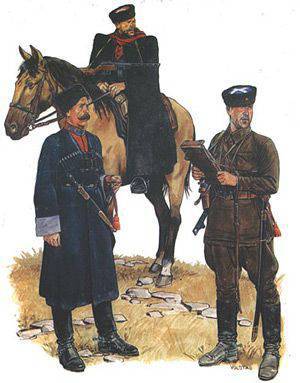
Fig. 2. Cossacks in the Red Army
It seemed to the enemies that the talk of the Bolsheviks took place abruptly, completely and irrevocably, and the Cossacks could never forget and forgive this. However, they miscalculated. Despite all the insults and atrocities of the Bolsheviks, the vast majority of Cossacks during the Great Patriotic War resisted patriotic positions and took part in the war on the side of the Red Army during hard times. Millions of Soviet people during the years of World War II defended their homeland and there were Cossacks in the forefront of these patriots. By June 1941, as a result of the reforms carried out following the results of the Soviet-Finnish and the first period of the Second World War, the Red Army left 4 cavalry corps of 2-3 cavalry divisions in each, a total of 13 cavalry divisions (including 4 mountain cavalry divisions ) Over the state, the corps had over 19 thousand people, 16 thousand horses, 128 light tanks, 44 armored vehicles, 64 field, 32 anti-tank and 40 anti-aircraft guns, 128 mortars, although the actual combat strength was less than the regular one. Most of the cavalry personnel were manned from the Cossack regions of the country and the republics of the Caucasus. In the very first hours of the war, the Don, Kuban and Terek Cossacks of the 6th Cossack Cavalry Corps, the 2nd and 5th Cavalry Corps and a separate cavalry division located in the border districts entered into battle with the enemy. The 6th Cavalry Corps was considered one of the most trained formations of the Red Army. G.K. wrote in his memoirs about the level of preparation of the corps. Zhukov, who commanded him until 1938: “The 6th Cavalry Corps was much better than other units in its combat readiness. In addition to the 4th Donskoy, the 6th Chongar Kuban-Tersk Cossack Division stood out, which was well prepared, especially in the field of tactics, horse and fire business. "
With the declaration of war in the Cossack regions, the formation of new cavalry divisions began at a rapid pace. The main burden on the formation of cavalry divisions in the North Caucasus Military District fell on the Kuban. In July, 1941, there were formed from the Cossacks of draft age five, and in August, four more Kuban cavalry divisions. The system of training cavalry units in territorial formations in the pre-war period, especially in the regions densely populated by the Cossack population, made it possible, without additional training in a short time and with minimal expenditure of forces and means, to put well-prepared combat units to the front. The North Caucasus turned out to be the leader in this matter. In a short period of time (July-August 1941), seventeen cavalry divisions were sent to the active armies, representing more than 60% of the number of cavalings formed in the Cossack regions of the entire Soviet Union. However, Kuban mobresursy on persons of military age, suitable for performing combat missions in the cavalry, were almost completely exhausted already in the summer of 1941. As part of the cavalry units, about 27 thousands of people were sent to the front, who had received training in Cossack territorial cavalry formations before the war. In the whole of the North Caucasus, in July-August, seventeen Kavdivisits were formed and sent into the army, more than 50 thousands of people of military age. At the same time, the Kuban sent more sons to the ranks of the defenders of the Fatherland during this period of the hardest battles than all the other administrative units of the North Caucasus combined. Already from the end of July they fought on the Western and Southern fronts. From September in the Krasnodar Territory there was an opportunity to form only volunteer divisions, conducting the selection of soldiers suitable for service in cavalry, mainly from people of non-conscript age. Already in October, the formation of three such volunteer Kuban cavalry divisions began, which then formed the basis of the 17 Cavalry Corps. All in all, by the end of 1941, about 30 new cavalry divisions were formed on the Don, Kuban, Terek and Stavropol regions. Also, a large number of Cossacks joined by volunteers in the national parts of the North Caucasus. Such units were created in the autumn of 1941, following the example of the experience of the First World War. These cavalry units in the people were also called "Wild Divisions".
In the Urals Military District, more than 10 cavalry divisions were formed, the backbone of which was the Urals and Orenburg Cossacks. In the Cossack regions of Siberia, Transbaikalia, Amur and Ussuri, 7 created new cavalry divisions from local Cossacks. Of these, the cavalry corps was formed (later the 6 of the Order of Suvorov Guards), which was fought over 7 thousand km. Its parts and compounds were awarded the 39-th orders, received the honorary title of the Rivne and Debrecen. 15-ti Cossacks and corps officers were awarded the title Hero of the Soviet Union. The corps established close patronage ties with the workers of Orenburg and the Urals, the Terek and the Kuban, the Transbaikalia and the Far East. From these Cossack districts went replenishment, letters, gifts. All this allowed Corps Commander S.V. Sokolov turn 31 in May 1943 to Marshal of the Soviet Union S.M. Budyonny with a petition for the name of the cavalry corps divisions Cossack. In particular, the 8 Far East was supposed to be called the cavalry division of the Ussuri Cossacks. Unfortunately, this petition was not granted, as were the petitions of many other corps commanders. The official name of the Cossacks received only 4 th Kuban and 5 th Don Guards Cavalry Corps. However, the absence of the name "Cossack" does not change the main thing. The Cossacks made their heroic contribution to the glorious victory of the Red Army over fascism.
Thus, at the beginning of the war, dozens of Cossack cavalry divisions fought on the side of the Red Army, they had 40 Cossack cavalry regiments, 5 tank regiments, 8 mortar regiments and divisions, 2 anti-aircraft regiments and a number of other units fully equipped with Cossacks of various troops. By February 1, 1942, 17 cavalry corps were operating on the front. However, due to the great vulnerability of cavalry from artillery fire, strikes aviation and the number of tanks by September 1, 1943 was reduced to 8. The combat strength of the remaining cavalry corps was significantly strengthened, it included: 3 cavalry divisions, self-propelled artillery, fighter-anti-tank artillery and anti-aircraft artillery regiments, guards mortar regiment rocket artillery, mine and separate anti-tank fighter divisions.
In addition, among the famous people during the Great Patriotic War there were a lot of Cossacks who fought not in "branded" Cossack cavalry or Plastun units, but in other parts of the Red Army or distinguished themselves in military production. Among them:
- tank ace number 1, Hero of the Soviet Union D.F. Lavrinenko - Kuban Cossack, a native of the village of Fearless;
- Lieutenant-General of the engineering troops, Hero of the Soviet Union D.M. Karbyshev - natural Cossack Kryashen, born in Omsk;
- commander of the North fleet Admiral A.A. Golovko - Terek Cossack, a native of the village of Prokhladnoy;
- designer gunsmith F.V. Tokarev - Don Cossack, a native of the village of Egorlyk Region of the Don Cossacks;
- Commander of the Bryansk and 2 Baltic Front, Army General, Hero of the Soviet Union MM. Popov - Don Cossack, a native of the village of Ust-Medveditsk Region of the Don Army.
At the initial stage of the war, the Cossack cavalry units participated in heavy border and Smolensk battles, in battles in the Ukraine, in the Crimea and in the Moscow battle. In the Battle of Moscow, the 2 Cavalry (Major General PA Belov) and 3 Cavalry (Colonel, then Major General LM Dovator) of the corps distinguished themselves. The Cossacks of these compounds successfully used the traditional Cossack tactics: ambush, hinterland, raid, detour, reach and penetration. 50-th and 53-th cavalry division, from the 3-th cavalry corps of Colonel Dovator, from 18 to 26 in November 1941, raided the rear of the 9-th German army, having passed 300 km fights. During the week, a cavalry group destroyed over 2500 enemy soldiers and officers, knocked out 9 tanks and more than 20 vehicles, defeated dozens of military garrisons. By order of the People's Commissar of Defense of the USSR from November 26 1941, the 3 th cavalry corps was transformed into the 2 th Guards, and the 50 th and 53 th cavalry divisions were among the first to be converted into the 3 th division and 4 th guards cavalry divisions, respectively. 2-th Guards Corps, in which the Cossacks of Kuban and Stavropol fought, fought as part of the 5-th army. This is how the German military historian Paul Karel recalled the actions of this corps: “The Russians in this wooded area acted bravely, with great skill and cunning. This is not surprising: parts were part of the elite Soviet 20 Cavalry Division, assault force of the famous Cossack Corps, General -Mayor Dovator. Having made a breakthrough, the Cossack regiments concentrated in various key points, formed into militant groups and began to attack the headquarters and warehouses in the German rear. They blocked the roads, destroyed the lines communications, blew up bridges, and then attacked rear support columns, destroying them mercilessly. Thus, on December 13 squadrons of the Cossack regiment 22 of the Cossack regiment defeated the artillery group 78 of the infantry division in 20 kilometers behind the front line. and transport hub. Other squadrons carried out a throw to the north between the 78 and 87 divisions, resulting in the entire front of the 9 corps literally floating in the air. The forward positions of the divisions remained intact, but the lines of communication, the routes of communication with the rear, were cut. Ammunition and food stopped flowing. Nowhere to put a few thousand wounded, accumulated on the front line. "
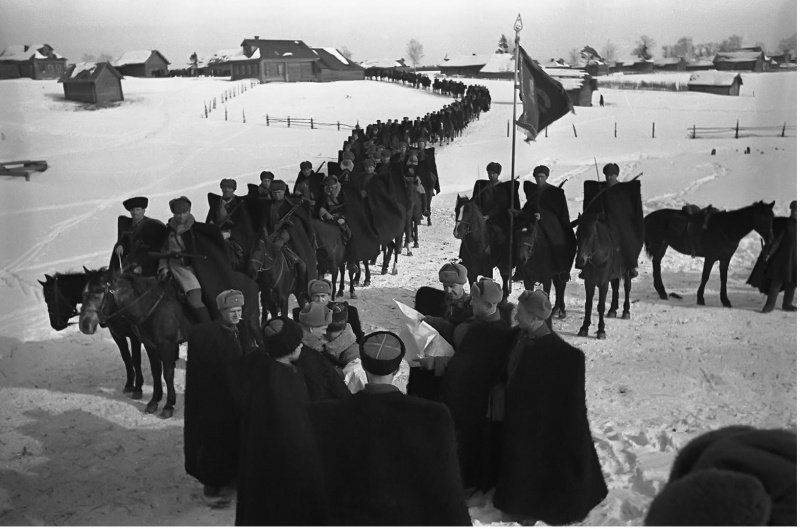
Fig. 3. General Dovator and his Cossacks
During the border battles, our troops suffered significant losses. The capabilities of rifle divisions in combat terms declined 1,5 times. Due to heavy losses and a shortage of tanks, the mechanized corps were disbanded as early as July 1941. For the same reason, separate tank divisions were also disbanded. Losses in manpower, equine composition and technology led to the fact that the main tactical formation of armored troops was the brigade, and the cavalry division. In connection with this, the General Headquarters of 5 July 1941 of the year approved a decree on the formation of 100 cavalry light-weight divisions of 3000 each. In total, 1941 light cavalry divisions were formed in 82. The combat strength of all light-duty cavalry divisions was the same: three cavalry regiments and a chemical protection squadron. The 1941 events of the year make it possible to conclude that the decision was of great importance, since cavalry formations had an active influence on the course and outcome of large-scale operations in the first period of the war, if they were given combat missions inherent to cavalry. They were able to unexpectedly attack the enemy at a given time and in the right place and with their fast and accurate exits to the flanks and to the rear of the German troops to restrain the advance of their motorized infantry and tank divisions. In off-road conditions, mudslides and large snow cavalry remained the most effective mobile combat force, especially with a shortage of mechanized means of high maneuverability. For the right to possess it in 1941, one could say a struggle between the commanders of the fronts. The record of negotiations between the Deputy Chief of the General Staff, General A.M., testifies to what place the cavalry assigned to the Supreme Command Headquarters during the defense of Moscow. Vasilevsky and Chief of Staff of the Southwestern Front, General P.I. Vodin in the night from 27 to October 28. The first one outlined the decision of the Stavka to transfer cavalry to the troops defending the capital. The second tried to evade the order, said that the 2-th cavalry corps of Belov, which is at the disposal of the South-Western Front, conducts continuous battles for 17 days and needs replenishment of the fighting composition, that the Commander-in-Chief of the South-West direction is Marshal of the Soviet Union S.K. Tymoshenko does not consider it possible to lose this corps. Supreme Commander I.V. Stalin first correctly demanded through A.M. Vasilevsky agreed with the proposal of the Supreme Command Headquarters, and then simply ordered to inform the front command that the trains for the transfer of the 2 th corps corps had already been filed, and recalled the need to give the command to load it. The commander of the 43 Army, Major General KD Golubev in the report of I.V. Stalin from 8 November 1941 of the year, among other requests, pointed out the following: "... You need a cavalry, at least one regiment. With their own forces formed only a squadron. " The fight between the commanders for the Cossack cavalry was not in vain. The 2 th cavalry corps of Belov, deployed near Moscow from the South-Western Front, reinforced by other units and the Tula militia, defeated Guderian’s tank army under Tula. This phenomenal case (the defeat of a tank army by a corps) was the first in history and recorded in the Guinness Book of Records. arms interceded and saved him from the wall. Thus, not having sufficiently powerful tank and mechanized formations in the Moscow area, the Supreme Command headquarters effectively used cavalry to repel enemy strikes.
In 1942, the Cossack cavalry units fought heroically in the bloody Rzhev-Vyazma and Kharkov offensive operations. In the Battle of the Caucasus, during the intense defensive battles in the Kuban and in the Stavropol region, the 4 Guards Kuban Cossack Cavalry Corps (Lieutenant General N.Ya. Kirichenko) and 5 Guards Don Cossack Cavalry Corps (Major General A .G. Selivanov). These corps were composed mainly of Cossack volunteers. More 19 July 1941, the Krasnodar Regional Committee of the CPSU (b) and the regional executive committee decided to organize cavalry Cossack hundreds to assist fighter battalions to fight possible enemy parachute assault forces. In the cavalry Cossack hundreds of collective farmers enrolled without age limit, able to control a horse and own firearms and cold arms. Horse equipment he was satisfied at the expense of collective and state farms, Cossack uniform at the expense of each soldier. In coordination with the Central Committee of the CPSU (b), the formation of three Cossack cavalry divisions began voluntarily from the number of Cossacks and Adygei without any age restriction from October 22. Each district of the Kuban formed a hundred volunteers, 75% of the Cossacks and commanders were participants in the civil war. In November, 1941 of the year hundreds were brought to the regiments, and the Kuban Cossack cavalry divisions made up the regiments that formed the basis of the 17 Cavalry Corps, which was included in the personnel of the Red Army 4 January 1942. The newly created connections became known as 10, 12 and 13-I Cavalry Division. The 30.04.1942 Corps came under the command of the North Caucasian Front. In May, 1942 (XCNUMX (Colonel S.I. Gorshkov) and 17 (YS. Sharaburno) Don Cossack Divisions) were infused on the orders of the Supreme Command Headquarters in 15. In July, 116, Lieutenant-General Nikolay Yakovlevich Kirichenko was appointed corps commander. The basis of all cavalry corps units was Cossack volunteers, whose age ranged from fourteen to sixty-four years. Cossacks sometimes came families with their children.
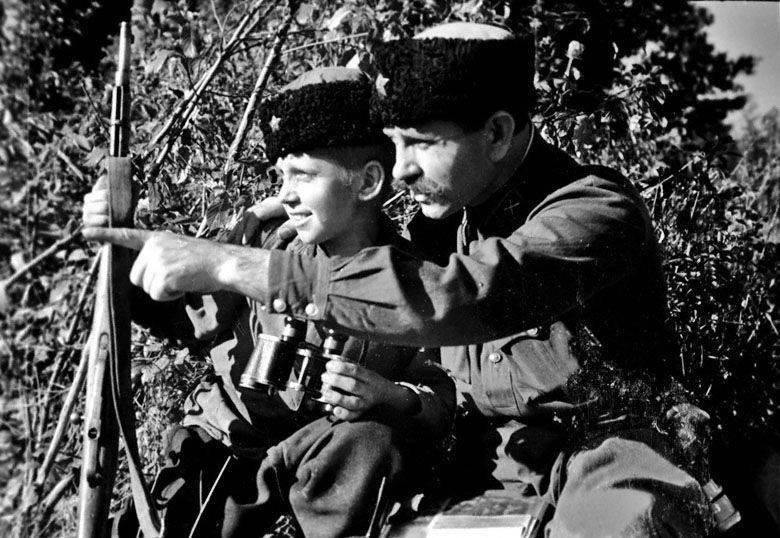
Fig. 4 Kuban Cossacks volunteers at the front
In the history of the first period of the Great Patriotic War, the process of forming volunteer Cossack cavalry formations occupies a special place. Tens of thousands of Cossacks, including those who were exempted from service due to age or health, voluntarily went to the formed Cossack regiments of the national militia and other parts. So, the Cossack of the Don village Morozovskaya I.A. Khoshutov, being very old, volunteered to join the militia Cossack regiment with two sons - sixteen-year-old Andrey and fourteen-year-old Alexander. There were many such examples. It was from such volunteer Cossacks that the 116-th Don Cossack Volunteer Division, the 15-th Don Volunteer Cavalry Division, the 11-th Orenburg Cavalry Division, the 17-th Kuban Cavalry Corps were formed.
From the very first fights in June-July of 1942, the press and radio reported on the heroic exploits of the Cossacks of the 17-th cavalcore. In reports from the front, their actions were taken as an example to others. During the battles with the Nazi invaders, the Cossack corps detached from their positions only by order. In August 1942 of the year, the German command aimed to break through our defenses in the area of the Kushchevskaya stanitsa: one mining division, two SS groups, a large number of tanks, artillery and mortars. Parts of the corps in the equestrian force attacked the concentration of enemy troops on the approaches and in Kuschevskaya itself. As a result of the rapid cavalry attack, German soldiers and officers were hacked up to 1800, 300 was captured, and great damage was inflicted in the material and combat equipment. For this and for the subsequent active defensive battles in the North Caucasus, the corps was transformed into the 4 Guards Kuban Cossack Cavalry Corps (order NKO number 259 from 27.8.42). 02.08.42 near Kushchyovsky Cossack 13 cavalry division (2 Reciprocating shelf, 1 artillery battalion) made for this unprecedented war mental attack on horseback of up to 2,5 kilometers wide at 101-th infantry division "green rose" and two SS regiment. 03.08.42 The 12-I cavalry division in the area of the village of Shkurinskaya repeated this attack and caused heavy damage to the German 4-Mountain Division and the White Lily SS regiment.
Fig. 5. Saber attack Cossacks under Kushchevskaya
In the battles of Kushchevskaya, the Don Cossack hundred from Beryozovskaya stanitsa, commanded by Senior Lieutenant K.I., especially distinguished themselves. Nedorubova. 2 August 1942 of the year in hand-to-hand fighting a hundred destroyed more than 200 enemy soldiers, of whom 70 was destroyed personally by Nedorubov, who received the title of Hero of the Soviet Union. In World War I, the Cossack Nedorubov fought on the South-Western and Romanian fronts. During the war he became a full George Knight. In the Civil War, he first fought on the side of the whites in the 18 Don Cossack Regiment of the Don Army. In 1918, he was captured and went over to the Reds. 7 July 1933 was convicted under the 109 article of the Criminal Code of the RSFSR on 10 years ITL for "abuse of power or official position" (allowed the collective farmers to use the grain remaining after sowing). For three years he worked in Volgolag on the construction of the Moscow-Volga Canal, for the shock work he was prematurely released and awarded the Soviet Order. In the Great Patriotic War, the non-conscript 52-year-old Cossack, senior lieutenant K.I. Nedorubov, in October 1941, he formed in the village of Berezovsky (now Volgograd region) Don Cossack hundred of volunteers and became its commander. Together with him in the hundred served his son Nikolay. On the front since July 1942. His squadron (one hundred), composed of 41-th Guards Cavalry Regiment, during raids on enemy 28 and 29 July 1942 years in the area of farms victory and Biruchiy, 2 August 1942 years under stanitsa Kushchevskaya, 5 September 1942 years near the village of Kura and 16 October 1942, near the village of Maratuki, destroyed a large number of enemy personnel and equipment. Until the end of his life, this inflexible warrior openly and proudly wore Soviet orders and crosses of St. George.
Fig. 6. Kazak Nedorubov K.I.
August and September 1942 years passed in heavy defensive battles on the territory of the Krasnodar Territory. In the second half of September, two Kuban divisions of the corps, by order of the higher command from the Tuapse region, were transferred by rail through Georgia and Azerbaijan to the Gudermes-Shelkovskaya region in order to prevent the Germans from advancing into the South Caucasus. As a result of heavy defensive battles, this task was completed. Here Cossacks got not only Germans, but also Arabs. Hoping to break through to the Middle East through the Caucasus, the Germans in early October 1942 introduced the Arab Volunteer Corps "F" into Army Group "A" under the control of the 1 Panzer Army. Already on October 15 Corps "F" in the area of the village of Achikulak in the Nogai Steppe (Stavropol) attacked the 4 Guards Kuban Cossack Cavalry Corps under the command of Lieutenant General Kirichenko. Until the end of November, Cossack cavalrymen successfully resisted the Nazi Arab mercenaries. At the end of January 1943, the Corps "F" was placed at the disposal of Army Group "Don", Field Marshal Manstein. During the fighting in the Caucasus, this German-Arab corps lost more than half of its composition, among which a significant part were Arabs. After that, the beaten Cossacks Arabs were transferred to northern Africa and more did not appear on the Russian-German front.
Cossacks from various connections heroically fought in the Battle of Stalingrad. The 3 Guards (Major General IA Pliev, Major General NS Oslikovsky 1942 from the end of December, 8 X (from February 1943 7 Guards; Major General M. D Borisov) and 4 (Lieutenant General TT Shapkin) cavalry corps. Horses were used to a greater extent to organize the rapid movement, in battle the Cossacks were used as infantry, although attacks in the equestrian system also took place. In November 1942 of the year during the Battle of Stalingrad, one of the last instances of cavalry combat in cavalry occurred. The 4 Cavalry Corps of the Red Army, formed in Central Asia and carrying occupation service in Iran, became a participant in this event. The corps of the Don Cossack commander, Lieutenant-General Timofey Timofeevich Shapkin, commanded.
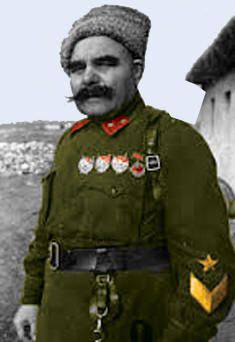
Fig. 7. Lieutenant-General Shapkin T.T. on the Stalingrad front
In the civil war podsailsul Shapkin fought on the side of the whites and, commanding the Cossack squadron, participated in the raid on Mamantov red rear. After the defeat of the Don army and the Bolsheviks conquered the area of the Don Army, in March 1920, Shapkin and his Cossacks moved their hundreds to the Red Army to participate in the Soviet-Polish war. During this war, he grew from a commander hundreds to a brigade commander and earned two orders of the Red Banner. In the 1921 year, after the death of the famous commander of the 14 Cavalry Division, Alexander Parkhomenko, in battle with the Makhnovists, he took command of his division. The third Order of the Red Banner Shapkin received for fights with basmachis. Shapkin, who wore twisted whiskers, the ancestors of the current migrant workers took for Budyonny, and one of his appearance in some village caused panic among the Basmachis of the whole neighborhood. For the elimination of the last Basmachi gang and the capture of the organizer of the Basmachi movement Imbragim-Bek, Shapkin was awarded the Order of the Red Banner of Labor of the Tajik SSR. Despite his white officer past, Shapkin was accepted into the ranks of the CPSU (B.) In 1938, and in 1940, Commander Shapkin was promoted to the rank of lieutenant general. 4-th cavalcourse was to participate in the breakthrough of the Romanian defense south of Stalingrad. Initially, it was assumed that horse breeders, as usual, would take horses to shelter, and cavalry on foot would attack the Romanian trenches. However, the artillery preparation had such an effect on the Romanians that immediately after it ended, the Romanians got out of the dugouts and ran in the panic to the rear. It was then that it was decided to pursue the Romanians in equestrian ranks. Romanians managed not only to catch up, but also to overtake, capturing a huge number of prisoners. Without encountering resistance, the cavalrymen took the Abganerovo station, where large trophies were captured: more than 100 guns, warehouses with food, fuel and ammunition.
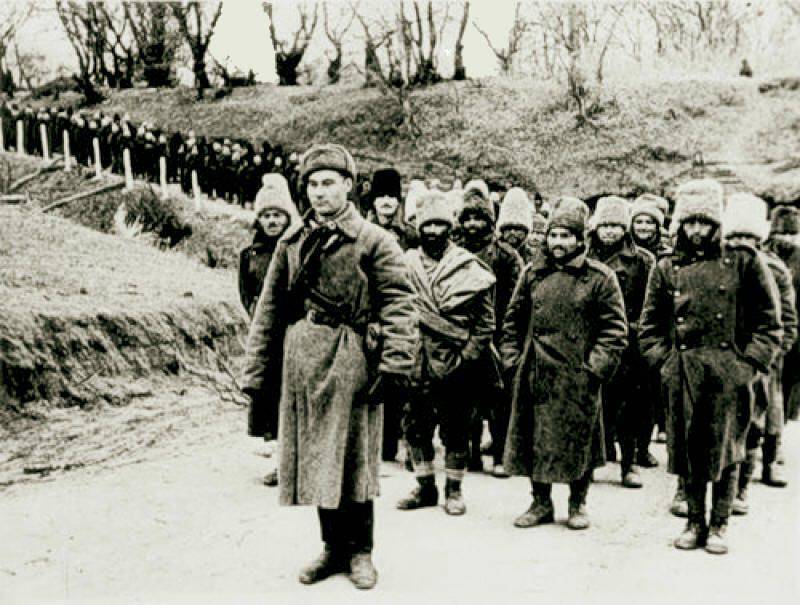
Fig. 8. Romanian prisoners at Stalingrad
A very curious incident occurred in August 1943 of the year during the Taganrog operation. The 38 th cavalry regiment under the command of lieutenant colonel IK was especially distinguished there. Minakov. Rushing ahead, he met one-on-one with the German Infantry Division and, dismounting, joined the battle with her. This division was at one time thoroughly battered in the Caucasus by the 38 of the Don Cavalry Division, and just before the meeting with the Minakov regiment came under the heavy blow of our aviation. However, in this state, she represented an even greater force. It is difficult to say how this unequal battle would end if the regiment of Minakov had a different number. By mistakenly accepting the 38-th cavalry regiment as the 38-th Don division, the Germans were horrified. But Minakov, having learned about it, immediately sent parliamentarians to the enemy with a brief but categorical message: "I propose to surrender. The commander of the 38 Cossack Division." The Nazis conferred all night and nevertheless decided to accept an ultimatum. In the morning two German officers arrived at Minakov with an answer. And hours in the 12 of the day, the division commander himself, accompanied by 44 officers, reported. And what a confusion the Hitler general had survived when he learned that, together with his division, he had surrendered to the Soviet cavalry regiment! In the notebook of German officer Alfred Kurtz, then picked up on the battlefield, the following entry was found: “Everything I heard about the Cossacks, the 1914 war, pales before the horrors that we experience when meeting them now. One memory of a Cossack attack It horrifies me, and I shiver ... Even at night in a dream, the Cossacks pursue me. It’s a black whirlwind sweeping away everything in its path. We fear the Cossacks, like the punishment of the Almighty ... Yesterday my company lost all the officers, 92 soldiers, three tanks and all machine guns. "
From 1943, the Cossack cavalry divisions began to unite with mechanized and tank units, in connection with which horse-mechanized groups and shock armies were formed. The horse-mechanized group of the 1 of the Byelorussian Front initially consisted of the 4-th Guards Cavalry and 1-th mechanized corps. Later on, the 9 tank corps was included in the unification. The group was attached to the 299-I assault aviation division, and its actions in different periods supported from one to two air corps. In terms of the number of troops, the group exceeded the ordinary army, its strike force was large. A similar structure and tasks had a shock army, consisting of cavalry, mechanized and tank corps. The front commanders used them at the point of impact.
Usually, Pliyev's horse-mechanized group entered battle after breaking through enemy defenses. The task of the cavalry-mechanized group was to, after the breakthrough of the enemy defense by the combined-arms units, enter the battle through the breach they had created. Entering a breakthrough and escaping into operational space, developing a rapid offensive in a large separation from the main forces of the front, KMG with sudden and daring blows destroyed the enemy’s manpower and equipment, smashed its deep reserves, disrupted communications. The Nazis from different directions threw operational reserves against KMG. Fierce fighting ensued. The enemy sometimes managed to surround our union of troops, and gradually the ring of encirclement was strongly compressed. Since the main forces of the front were far behind, one could not count on their help until the beginning of the general offensive of the front. Nevertheless, KMG managed to form a mobile external front even at a considerable distance from the main forces and to bind all the reserves of the enemy. Such deep raids by KMG and the shock armies were usually carried out several days before the general offensive of the front. After unblocking, the front commanders threw the remnants of a cavalry-mechanized group or strike armies from one direction to another. And they had time wherever it was hot.
In addition to the cavalry Cossack units during the war, so-called "Plastun" formations were formed from the Kuban and Terek Cossacks. Plastun is a Cossack infantryman. Initially, the best Cossacks from those who performed a number of specific functions in combat (reconnaissance, sniper fire, assault actions), which were not characteristic for use in equestrian formation, were called plasters. The Cossacks-squadrons, as a rule, were transferred to the place of fighting on steam-comb warriors, which ensured high mobility of the foot units. In addition, certain military traditions, as well as the cohesiveness of Cossack units, provided the latter with the best combat, moral and psychological training. On the initiative of I.V. Stalin began the formation of the Plastun Cossack Division. The 9-I Mountain Division, previously formed from the Kuban Cossacks, was transformed into a Cossack.
The division was now so saturated with the means of thrust that it could independently make combined marches along 100-150 kilometers per day. The number of personnel increased by more than one and a half times and reached 14,5 thousand people. It should be emphasized that the division was reformed by special states and with a special purpose. This emphasized the new name, which, as stated in the order of the Supreme Commander from 3 of September, she received "for defeating the German fascist invaders in the Kuban, the liberation of the Kuban and its regional center - the city of Krasnodar." Fully division now was called so: 9-I Plastunskaya Krasnodar Red Banner Order of the Red Star Division. Kuban took care of the supply of food and uniforms to the Cossack divisions. Everywhere in Krasnodar and the surrounding villages, workshops were urgently created in which Cossacks sewed thousands of sets of Cossack and Plastunian forms — Kubankas, Circassians, Beshmets, and Towers. Sewed for their husbands, fathers, sons.
Since 1943, the Cossack cavalry divisions took part in the liberation of Ukraine. In 1944, they successfully acted in the Korsun-Shevchenko and Iasi-Kishinev offensive operations. The Cossacks of the 4 of Kuban, 2, 3 and 7 of the Guards Corps corps liberated Belarus. The Ural, Orenburg and Trans-Baikal Cossacks of the 6 Guards Cavalry Corps attacked right-bank Ukraine and the territory of Poland. 5 th Don Cossack Guard Corps successfully fought in Romania. The 1 th Guards Corps entered Czechoslovakia, and the 4 Th and 6 th Guards Corps entered Hungary. Later here, in the important Debrecen operation, units of the 5-th Don and 4-th Kuban Cossack cavalcards especially distinguished themselves. Then these corps, together with the 6 Guards Corps, fought valiantly in the Budapest region and at Lake Balaton.
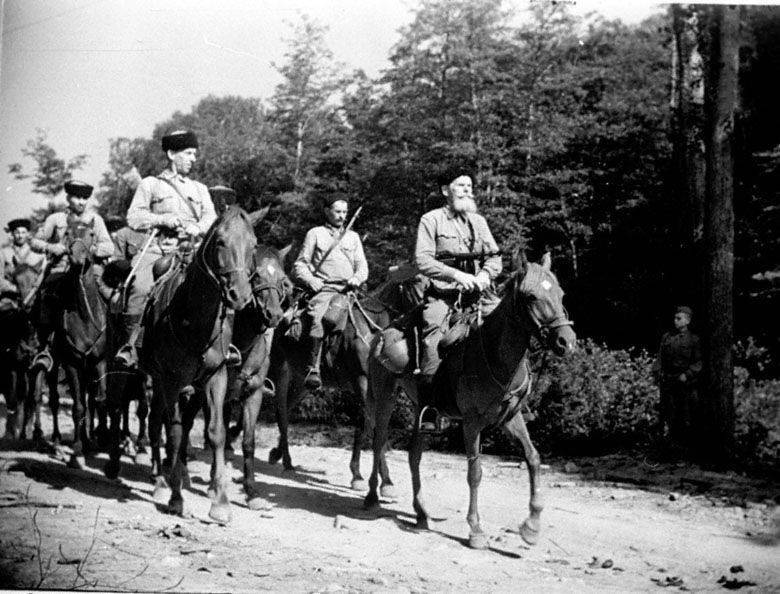
Fig. 9. Cossack part on the march
In the spring of 1945, the 4 and 6 Guards cavalry corps liberated Czechoslovakia and smashed the Prague enemy grouping. 5-th Don Cavalry Corps entered Austria and reached Vienna. 1, 2, 3 and 7 of the Corps participated in the Berlin operation. At the end of the war, the Red Army had 7 Guards cavalry corps and 1 "simple" cavalry corps. Two of them were purely “Cossack”: the 4 Guards Cavalry Kuban Cossack Corps and the 5 Guards Cavalry Don Cossack Corps. Hundreds of thousands of Cossacks fought heroically not only in cavalry, but also in many infantry, artillery and tank units, in partisan detachments. They all contributed to the victory. During the war, tens of thousands of Cossacks fell to the death of brave battlefields. For their accomplishments and heroism shown in battles with the enemy, many thousands of Cossacks were awarded military orders and medals, and 262 Cossacks became Heroes of the Soviet Union, 7 cavalces and 17 cavalry divisions received the Guards titles. Only in the 5-th Don Guards Corps corpus, more than 32 thousands of soldiers and commanders were awarded high government awards.
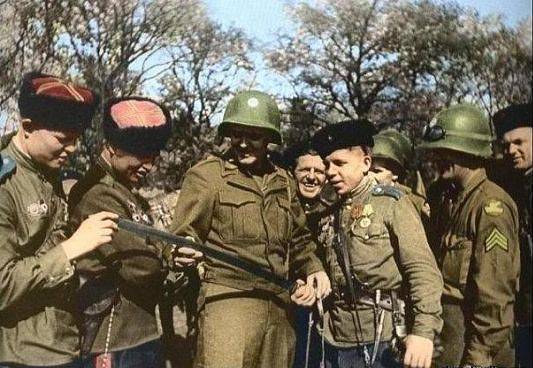
Fig. 10. Meeting the Cossacks with the Allies
Peaceful Cossack population selflessly worked in the rear. On the labor savings of the Cossacks, voluntarily transferred to the Defense Fund, tanks and aircraft were built. With the money of the Don Cossacks, several tank columns were built — the Don Cooperator, the Don Cossack, and the Don Osoaviakhimovts ”; and the Kuban Soviet tank column was used for the funds of the Kuban Cossacks.
In August, the 1945 of the Trans-Baikal Cossacks of the 59 Cavalry Division, operating as a part of the Soviet-Mongolian cavalry-mechanized group of General Pliev, participated in the lightning-quick rout of the Kwantung Japanese army.
As we can see, during the Great Patriotic War, Stalin was forced to recall the Cossacks, their fearlessness, love of country and the ability to fight. In the Red Army there were Cossack cavalry and Plastun units and formations, which made the heroic journey from the Volga and the Caucasus to Berlin and Prague, deserved many military awards and the names of Heroes. Admittedly, cavalry corps and horse-mechanized groups showed themselves well during the war with German fascism, but already 24 June 1945, right after the Victory Parade, I.V. Stalin ordered Marshal S.M. Budyonny proceed to disband the cavalry formations, since cavalry as a branch of the Armed Forces abolished.
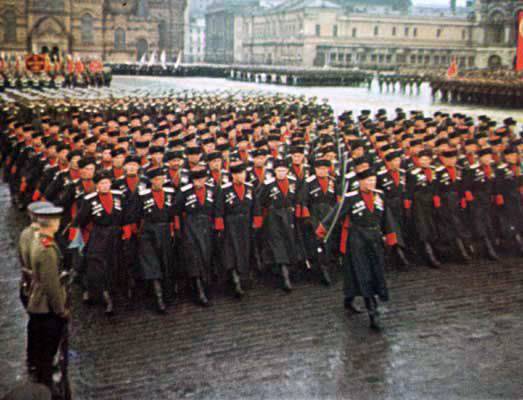
Fig. 11. Cossacks on the Victory Parade 24 June 1945 of the year
The main reason for this, the Supreme Commander called the urgent need for the national economy in the power of the colony. 1946 summer, only the best Cavalry Corps were reorganized into cavalry division with the same numbers, and a part of the cavalry remained: 4-Cavalry Guards Kuban Cossack Lenin Order of the Red Banner Order of Suvorov and Kutuzov division (Stavropol) and 5-Guards Cavalry Don Cossack Budapest Red Banner Division (Novocherkassk). But they, as cavalry, did not live long. In October 1954 of the Year, the 5-I Guard Cossack Cavalry Division was transformed by the Directive of the General Staff of the USSR Armed Forces into the 18-th Guards Heavy Tank Division. By order of the Minister of Defense of the USSR from 11 January 1965, 18-i Guards. ttd was renamed to 5-yu gv. so on In September 1955 of the year 4-I Guards. Cd of the North Caucasian Military District was disbanded. On the territory of the military camps of the disbanded 4 Guards Cavalry Division, the Stavropol Radio Engineering School of the Air Defense Forces of the country was formed. Thus, despite the merits, soon after the war, the Cossack units were disbanded. Cossacks were invited to live out their age in the form of folklore ensembles (with a strictly defined theme), and in films like "Kuban Cossacks." But that's another story.
Materials used:
Gordeev A.A. History of the Cossacks.
Mamonov V.F. and others. The history of the Cossacks of the Urals. Orenburg - Chelyabinsk, 1992.
Shibanov N.S. Orenburg Cossacks of the XX century.
Ryzhkova N.V. Don Cossacks in the wars of the early twentieth century, 2008.
Pliev I.A. Roads of war. M., 1985.
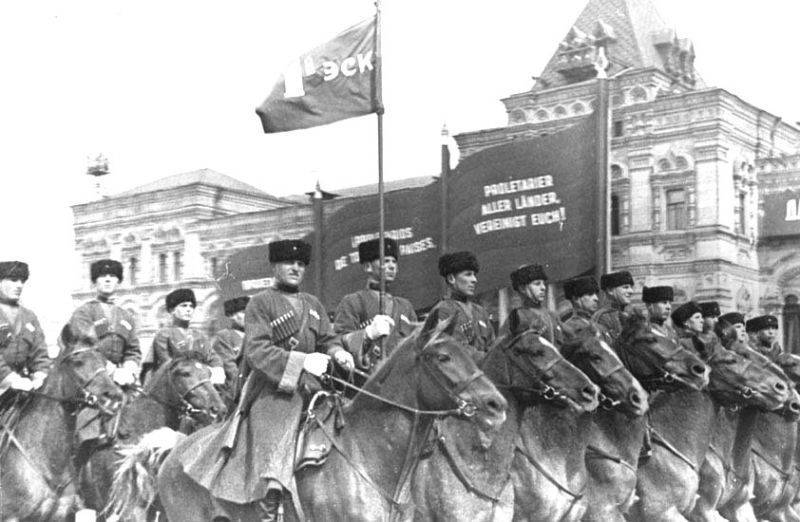
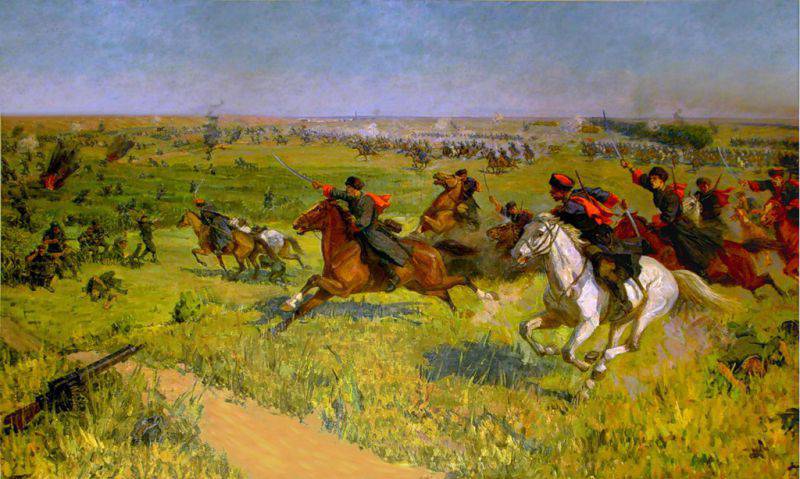
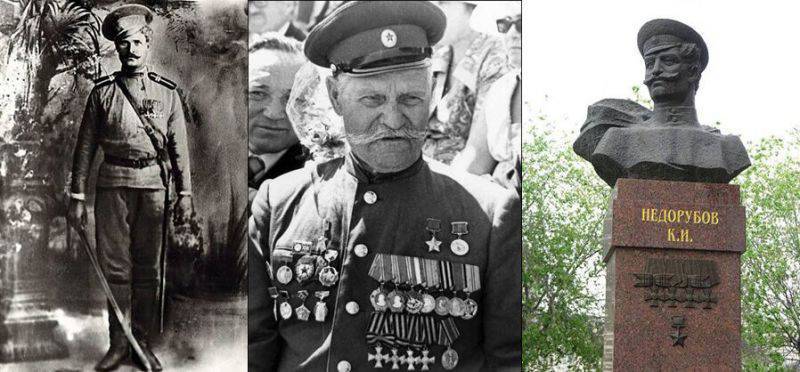
Information